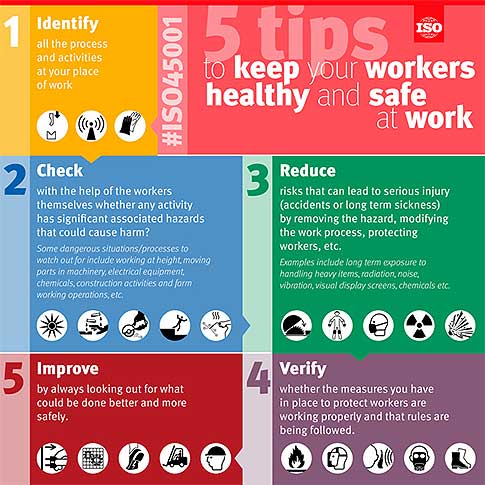(ISO: Geneva) -- Voting has begun on the draft version of ISO 45001, which sets the requirements for an occupational health and safety management system.
ISO 45001 is currently at the committee draft stage of development, the first consultation phase. During this stage, the countries (ISO members) that have chosen to participate in the standard’s development have two months to form a national position on the draft and comment on it.
Why an ISO standard?
According to the International Labour Organization, approximately 2.34 million people died as a result of work-related accidents and diseases in 2013. Approximately 2 million are the result of work-related illnesses and 321,000 are due to accidents.
A strong occupational health and safety management system can bring these numbers down by reducing accidents and ill health linked to the workplace. This will in turn create a positive corporate culture as employees feel their needs and safety are being taken into account. It can also help organizations to avoid costly prosecutions and might even reduce insurance costs.

…
Add new comment